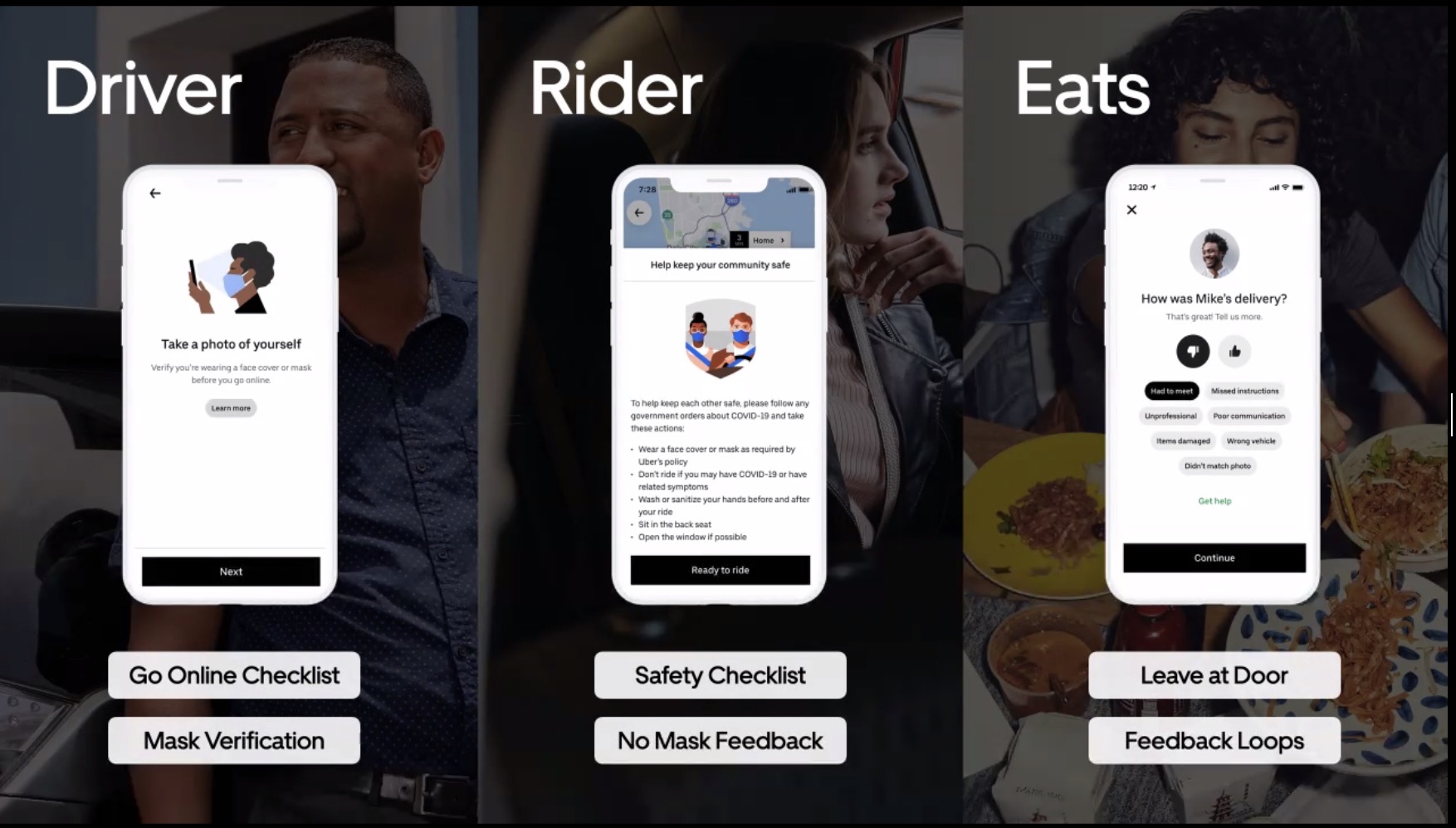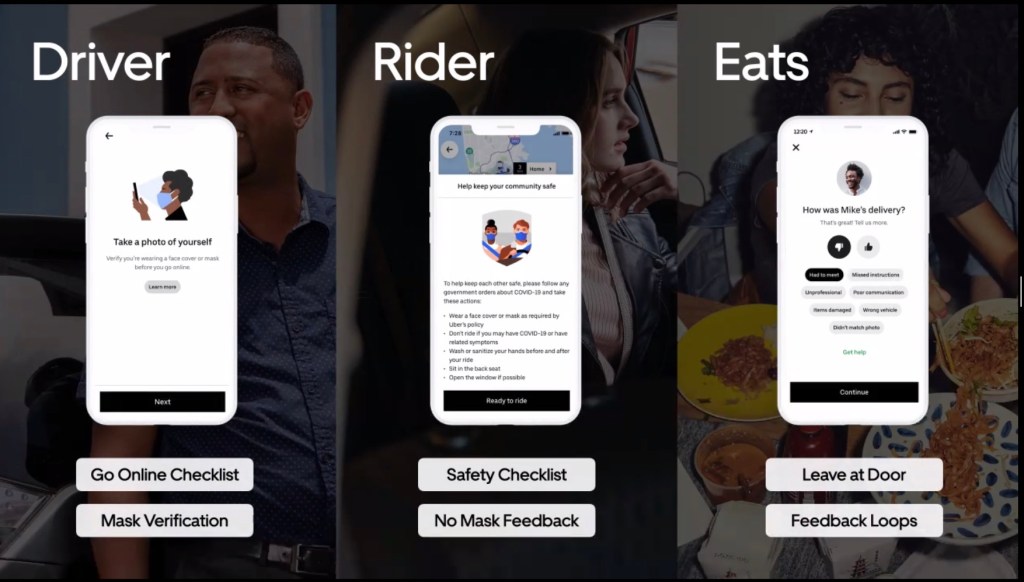Uber is rolling out a series of changes to its ride-hailing and on-demand food delivery apps, beginning Monday, as cities and states lift stay-at-home orders prompted by the COVID-19 pandemic.
The changes, which includes an online checklist for all users, limits on the number of passengers in vehicles and a face mask verification feature for drivers, aims to stop the spread of COVID-19, the company said Wednesday.
“This is not a problem that can only be solved by the drivers or only can be solved by the riders, it is everyone’s responsibility,” said Sachin Kansal, senior director of product management at Uber, during a webinar Wednesday announcing the changes.
User policing lies at the heart of these new policies. Riders and drivers, as well as delivery workers and even restaurants that use Uber Eats, will have the power to report unsafe COVID-19 behavior and give low ratings. For instance, a delivery worker can give feedback that a restaurant doesn’t have proper protocols in place, such as social distancing. Meanwhile, a restaurant can provide feedback if a delivery driver isn’t wearing a mask.
“These feedback loops between all the parties are extremely important for us to maintain safety,” Kansal said.
The new policies will remain for the next several months, according to Kansal, who added that “as the situation on the ground changes, we will evolve our policies as well.”
All Uber app users will now have to read and agree to an online checklist before picking up a rider or trying to hail a ride, according to the company. The online checklist requires riders and drivers to confirm that they have taken certain steps such as putting on a face mask and washing their hands to help stop the spread of COVID-19.

Uber will encourage drivers and riders to cancel trips — a move that in the past could result in a lower rating — if they don’t feel safe or the user is not wearing a face mask or cover. If drivers or riders give a low rating, they can now pick “no face cover or mask” along with the other traditional options such as “late for pickup,” “disrespectful” or “cleaniness.” If the user chooses the “no face cover” option in their review, the rider or driver will be sent a message informing them about the requirements of being on the Uber platform.
Kansal said Uber will take riders or drivers off the platform if they repeatedly violate these requirements.
Drivers will have to verify they’re wearing a mask before accepting trips, using Uber’s existing driver selfie technology. The app also features a video tutorial on how to wear a mask.
The selfie technology, which has been in use since 2016, isn’t available on the rider app. Instead, riders will be policed by drivers. Riders are also asked to keep the window open, if possible.
For now, Uber isn’t adding shared rides, known as Uber Pool. The company has also put new restrictions on UberX and UberXL rides. Riders are no longer allowed to ride in the front seat, which Uber says will allow for more distance in the car. The change means UberX can have a maximum of three passengers in the vehicle.
































Comment